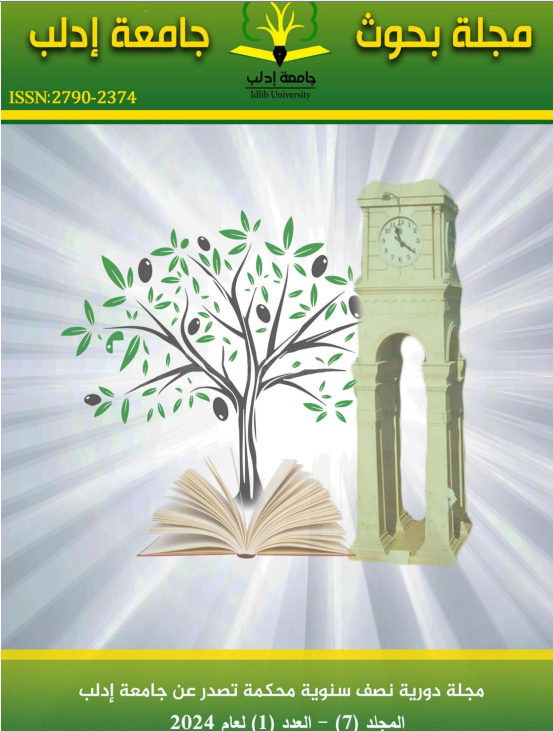Isolating and Identifing the Fungi Causing Wilt of Tomato and testing Their Pathogenicity in the Governorate of Idlib
Keywords:
Tomato Wilt- Fusarium oxysporum, Fusarium Wilt- Fusarium solaniAbstract
Samples of Tomato plants showing symptoms of wilting were collected from tomato fields in Idlib Governorate during the spring and summer of 2021, 2022 from the regions of Sarmin, Binnish, Taftaaz, Hazano, Killi, Arab Said, Sejer, Al-Jabal AlWastani, Al-Balaa and Jisr Al-Shughur. The pathogenic fungus was isolated from roots and stems of tomato plants that showed symptoms of Fusarium wilt disease. Twenty-three isolations were obtained. The fungal isolations were characterized and identified by the morphological characterization of the colonies, their ability to form conidia and chlamydia sopres, and the morphology of the spores. It was found that 17 isolations belonged to the fungus Fusarium oxysporum, and 6 ones belonged to the fungus Fusarium solani. The results of the pathogenicity tests showed that all isolations were pathogenic, but the virulence was different among them, and it was that the isolates Fo3, Fo7, Fo9 were the most virulent pathogens, as they caused a high disease severity (58.7%, 60.0% and 77.0%%) respectively, on tomato plants after 40 days of artificial infection

